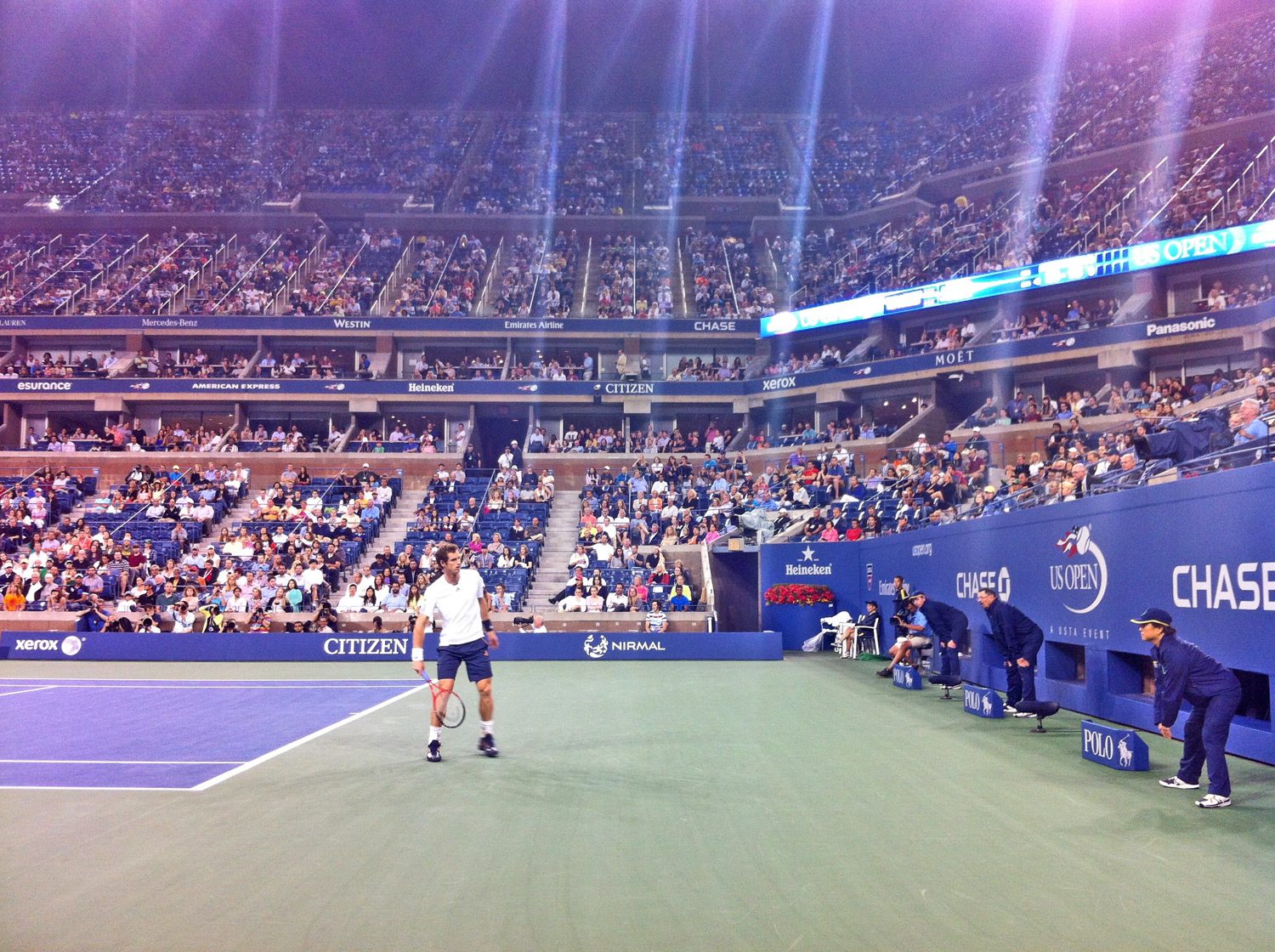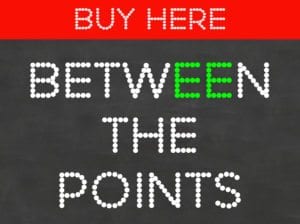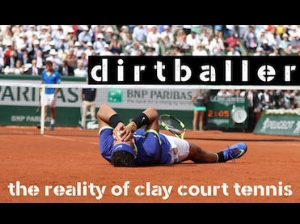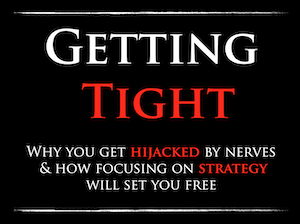Educate your tennis eye
Smarter #usopen viewing.
Enjoy the tournament more – because you know more.
There is a lot that escapes the eye when you watch a tennis match. Important things happen in the middle of a point that are forgotten by the time the point ends. Subtle things happen between the points that are not measured, yet critical to the final outcome.
A game of tennis looks like a game of pinball, but it is far from it. Tennis is a game of repeatable patterns that have winning percentages – and that’s exactly what I am going to help you with. You are going to have a whole lot more fun watching this year’s #usopen if you are looking in all the right places.
Here’s a quick list of 10 things that will definitely help your viewing pleasure over the next 2 weeks in the Big Apple.
1. You Are Watching Two Matches
All tennis matches comprise two parts:
- the match during the point (all the running & hitting)
- the match between the points (all the thinking & emotions)
Ok, so here’s a question for you. Which one is more important? Have a good think about it….
Well, the answer is the match between the points. Imagine a player is not good here. They can’t figure out a game plan to beat the opponent, they focus too much on themselves, get too upset, and have no focus. Now, after 20 seconds of that circus, try and go and play a really good point with 10,000 people in the stands watching you. That’s rough.
The match between the points involves everything mental and everything emotional. Handling this critical time decides the final outcome far more than anything else. When players start to play poorly, it’s typically a result of not handling the pressure between the points well enough.
2. Look for the Little Things
The best thing here is to give you some examples. Here’s five.
1. When Roger Federer crushed big forehands right down the middle of the court against Novak on the very first point of the Cincinnati final, that’s a good thing. Roger has come to play (with the right game style).
2. When Novak plays too deep in the court in the French Open final early on against Stan Wawrinka, that’s a bad thing for the Serbian nation. Novak thrives on court position, and Stan’s power upended that dynamic.
3. When Rafael Nadal face starts looks uncertain. There is too much doubt in his mind lately, and he wears it on his face.
4. When Serena Williams looks too much at her coaches box. That’s not a good thing, and it’s because she is looking for answers.
5. When Kei Nishikori starts roping backhands. He gains a lot of confidence from that wing, and when you see him dial it in, the rest of the artillery is sure to be on song as well.
What you are looking for are indicators – not something about a player’s total game – just thin slices of it that tell a lot about what’s going on around it (thank you, Malcolm Gladwell).
3. 50-50 Balls
This is a shot that the player can either follow to the net, or stay back and grind. The average winning % from the baseline is typically 47%. The average winning % approaching is right around 67%. How a player reacts to this short ball (go in or stay back) will tell you a lot about their risk tolerance, and comfort at the net. For whatever reason, it seems to “sting” more when a player goes to the net and loses the point. Too many players stay back in the trenches and try to outwork their opponent, but it’s a very difficult task. Only 7 men at the 2012 U.S. Open had a winning % from the back of the court. Roger Federer is the benchmark here lately regarding 50-50 balls – he is coming forward on all of them. Smart play.
4. Points Have 4 Parts
Here they are:
- Serving
- Returning
- Rallying
- The Net
What you are looking for are the match-ups. Look to see who is more likely to win each of these battles, and evaluate how important they are to the final outcome.
5. Break Points
I always look to see who is the first player to gain a break point in the match. If they convert it, all is good. If they don’t break in that game, they typically face an uphill battle for the rest of the match because the momentum has swung against them. It’s not a hard and fast rule, but it’s definitely something I always pay attention to. I also look to see which player wins the opening game of the deciding set – the third set in a three set match (than you, Brandon Wagner).
6. Errors mean more than Winners
Quite often, the player that wins the match hits less winners. It happens a ton. In fact, I am going to get the official number from the entire men’s and women’s tournament. The reasoning is simple. The pool of points for winners is typically around 25%-30% of total points. Not that significant. The error total usually represents around 70% of total points, and the match winner is almost always the player that makes less errors – not hits more winners.
7. Court Position
The player that plays closer to the baseline in general rally play, almost always wins the match. Now, there will always be exceptions with playing style, but staying up in the court around the baseline has huge benefits. You get better court geometry, and you get to rebound the ball back to the opponent quickly, robbing them of time to adequately prepare for their next shot. Pushing your opponent back is like disarming them, as it’s so tough to hurt from deep behind the baseline.
8. Who Needs it More?
Get a feel for the history of the two players. Do a little research and often times an upset becomes obvious. Both players “want” to win, but who “needs” to win? Who is more desperate for the victory? Which player needs the win to make the cut for another tournament, to snap a losing streak, to enter the Top 100, etc. There are a lot of different motivating factor that play a huge role in what you are watching.
9. 2nd Serve Exposure
Missing too many first serves gives undue exposure to second serves, where the winning percentage drastically drops. For example, in the 2014 Wimbledon final, Roger Federer won 77% of his first serve points, but only 44% of his second serve points. Hitting too many second serves loads a ton of pressure on a server, as the returner has just moved from a defensive mindset against a first serve to an offensive mindset against a second serve.
10. Patterns of Play
Look to see which player seems to be doing the same thing over and over again. That’s actually a good thing, sticking to a pattern that they can continually force on their opponent, particularly under pressure at the end of a set. A good example of that is David Ferrer. He may hit one or two backhands in the Ad Court, but rarely a third – he has upgraded to a forehand, and he loves to rip it inside-in down the line. If he can continually run that pattern, he is going to be so tough to defeat.
I hope those 10 keys improve your viewing pleasure of the 2015 U.S. Open.
For more in-depth analysis of tennis strategy, please check out my 5 products on this website.
- 25 Golden Rules of Singles Strategy
- 25 Golden Rules of Doubles Strategy
- Between the Points
- Num3ers
- Dou8les Num3ers
I will be updating the Brain Game Blog daily, so look for a lot more insight coming your way in the next two weeks.
Best,
Craig









